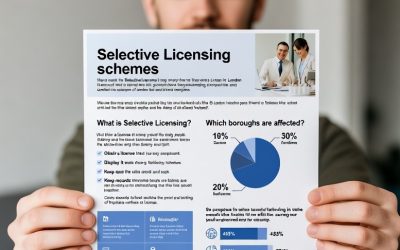Prime Minister Boris Johnson recently announced plans to extend the Right to Buy scheme to people on low incomes who currently rent their homes from housing associations saying he will commit to “reforms to help people cut costs in every area of household expenditure” over the coming weeks.
He argued that the £30 billion currenty spent on housing benefit, of which much is currently paid as rent to private landlords, should instead be used to help people secure and pay for mortgages on their own home.
What is Right to Buy?
Right to Buy is a government scheme that allows tenants in England to buy their council house at a discounted rate. Until now this was limited to tenants in local authority housing.
The scheme has been abolished in Scotland and Wales, but it’s still available in Northern Ireland.
Across England, the maximum discount a local authority tenant can get on a house is £87,200, however, across London boroughs that rate of overall discount is higher, at £116,200.
A tenant must have lived in their council house for three to five years in order to be eligible for a 35 per cent discount. An additional 1 per cent can be claimed every year past that, bringing the overall discount to 70 per cent.
The system was brought into effect 40 years ago by the then prime minister Margaret Thatcher through the Housing Act of 1980.
Today’s changes to Right to Buy will open up the scheme to low-income tenants who receive housing benefit and who rent their homes from housing associations. People with savings over £16,000 are not eligible for housing benefit.
Housing associations are not-for-profit bodies that rent homes to 2.5 million people who receive housing support. Prior to today’s extension of Right to Buy there was already a scheme in place for people to buy their homes from housing associations but the discount was limited to £16,000 on the market value.
Downsides of the scheme
The Right to Buy scheme provides renters with something to show for years of paying rent, offering an asset that can, if necessary, be sold later in life in order to pay for care.
Therefore, in theory it could facilitate less dependency on the state.
However, the Right to Buy scheme has caused a huge dent in the supply of social housing.
When it was introduced by PM Margaret Thatcher in the 1980s, there were 5.5 million affordable homes in Britain, whereas now there are 4.2 million.
The number of affordable homes built each year falls far short of the number sold or required.
More than one million UK families are currently on social housing waiting lists, and critics of the scheme argue that focus should be on building more social homes rather than selling existing council and housing association-owned properties.
Who qualifies for Right to Buy?
The rules for eligibility to the scheme are complex and the details for the extension to housing associations are not yet clear. There is an eligibility checker available on the Own Your Own Home website.
You can apply to buy your own council home in England if:
- The property is your main or only home
- You’re a ‘secure tenant’, meaning a contract is in place with the landlord
- The property is self-contained
- You have had a public sector landlord for three years, although this does not need to be three years in a row
- There is also an option called ‘Preserved Right to Buy’, if your home was council-owned, but was sold to another landlord
You can also make a joint application with:
- Someone you’re sharing a tenancy with
- Up to three members of your family who have lived with you for the past year (if they’re not sharing the tenancy).
There is also a Right To Buy calculator that you can use to work out what sort of discount you’re eligible for.
If you are looking for advice on purchasing a property in the UK or are looking to source a property, do get in touch as we can help you buy, sell, lease or manage your portfolio.
We’re experts in both residential and commercial real estate, and will work with you personally to ensure your investments are worthwhile and serving your best interests.
Call us direct on + 44 (0) 207 993 4081 or simply send an email for a fast response.



